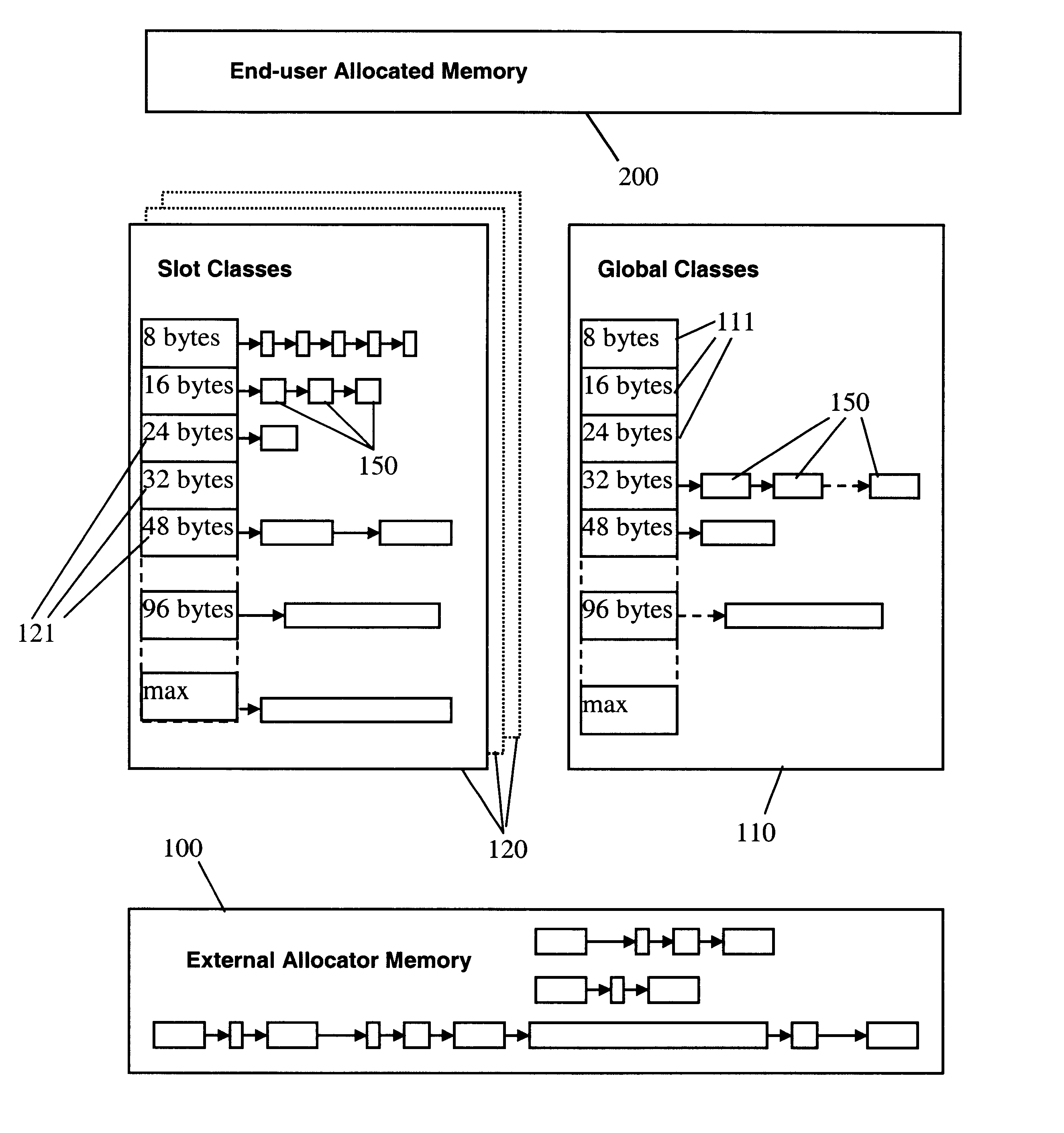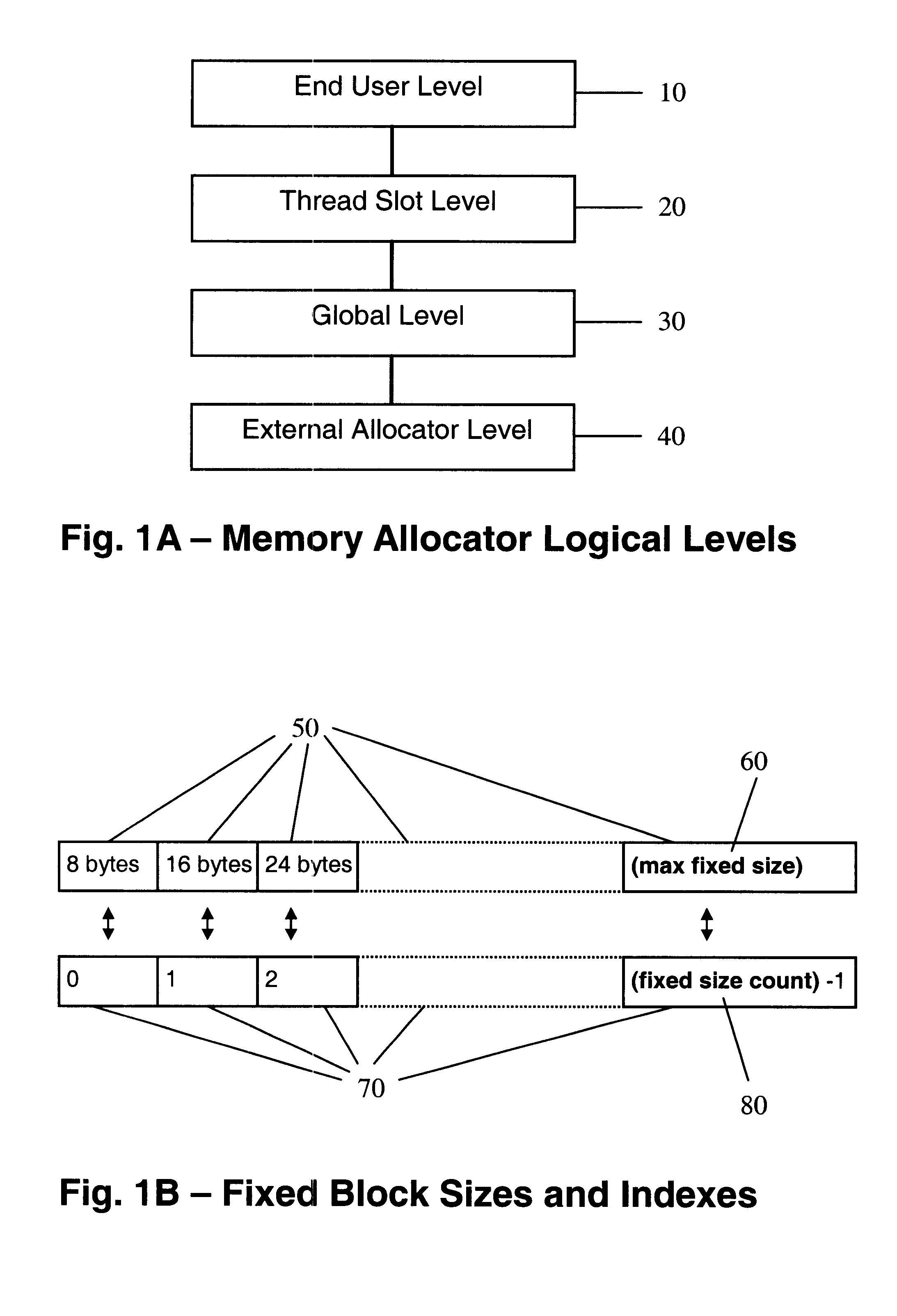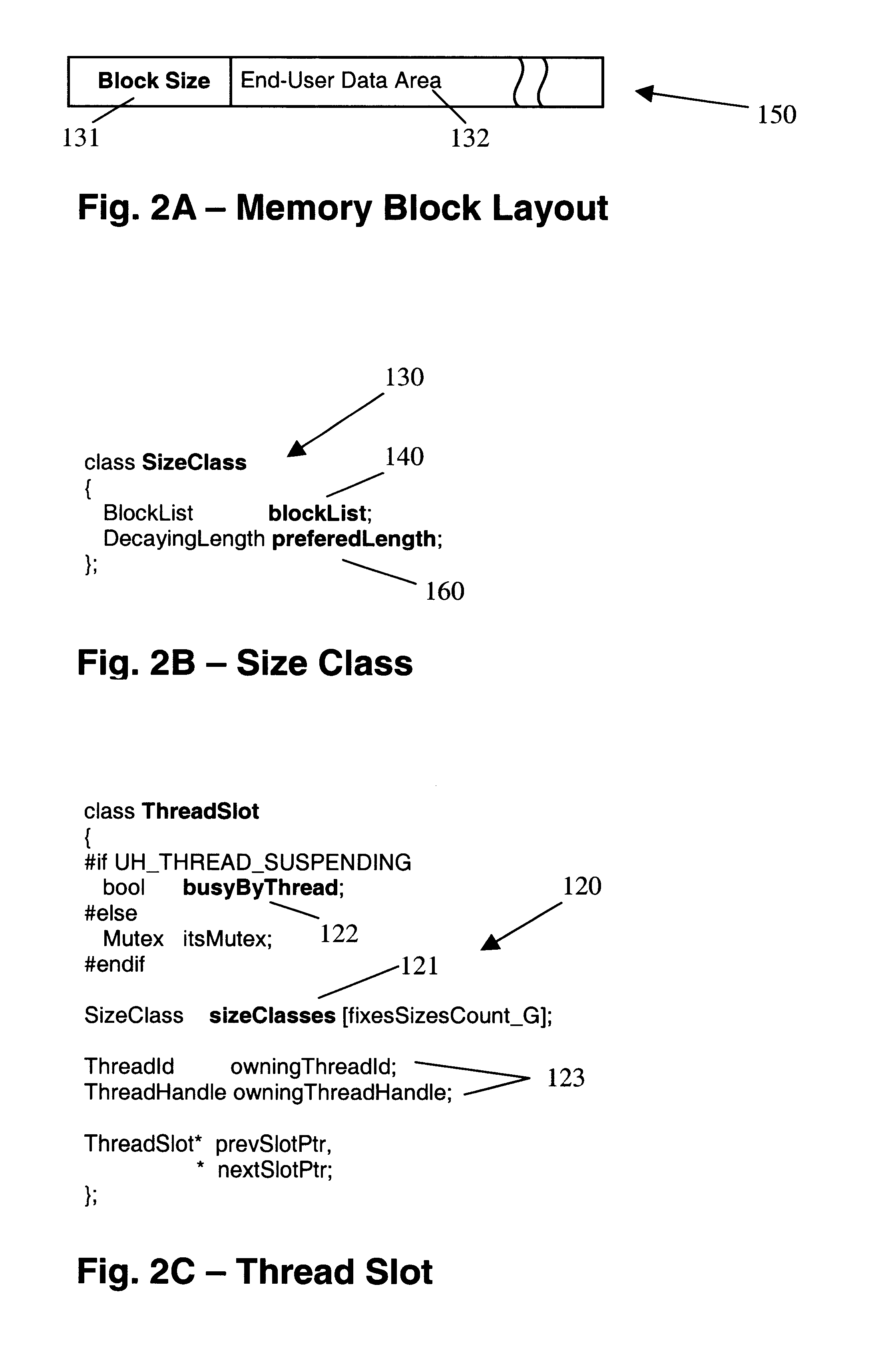Memory allocator for multithread environment
a multi-thread environment and memory allocator technology, applied in memory adressing/allocation/relocation, multi-programming arrangements, program control, etc., can solve the problems of wasting time, wasting resources, and wasting resources, so as to save additional time
- Summary
- Abstract
- Description
- Claims
- Application Information
AI Technical Summary
Benefits of technology
Problems solved by technology
Method used
Image
Examples
embodiment implementation
Appendix--Main Embodiment Implementation Source Code
The preferred embodiment of the invention is best illustrated in the Appendix. The Appendix contains C++ source code of a fully functioning prototype implementation of the main embodiment of the invention, as well as of several alternative ones. The source code consists of separate compilation units (".h " and "cpp" files); the beginning and the end of each file is indicated by comments in the code.
The source code can be build using the Visual C++ Compiler Version 6.0, a product of Microsoft Corporation, Redmond, Wash. The operating environment is one of the operating systems Microsoft Windows 95 / 98 / NT / 2000, all products of Microsoft Corporation, Redmond, Wash.
In order to build the source code, all the source files (the ones with extension ".cpp") should be compiled and linked together. The header files (the ones with extension ".h") are needed at the moment of compilation. Multithread mode switch should be used for compilation, an...
PUM
 Login to View More
Login to View More Abstract
Description
Claims
Application Information
 Login to View More
Login to View More - R&D
- Intellectual Property
- Life Sciences
- Materials
- Tech Scout
- Unparalleled Data Quality
- Higher Quality Content
- 60% Fewer Hallucinations
Browse by: Latest US Patents, China's latest patents, Technical Efficacy Thesaurus, Application Domain, Technology Topic, Popular Technical Reports.
© 2025 PatSnap. All rights reserved.Legal|Privacy policy|Modern Slavery Act Transparency Statement|Sitemap|About US| Contact US: help@patsnap.com



